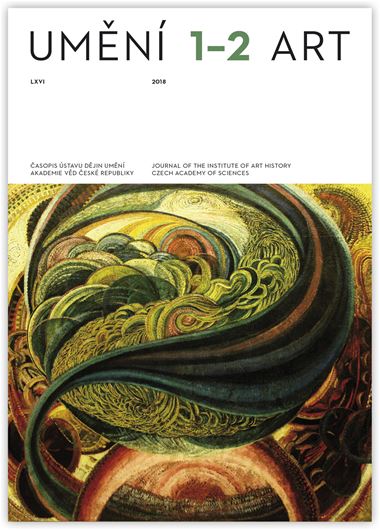Lucia Kvočáková
Anton Jaszusch. Umělec jako nástroj mocenských vztahů
The study of the example of Anton Jaszusch investigates how the artist and his work could become the instrument of power relations in the sense of the Foucault understanding of power. The context of Jaszusch’s work changed several times in the course of time and this also changed its interpretation. This paper analyses in detail the available documents (periodicals, catalogues, specialist articles and publications), in order to highlight these changes and the artist’s position as an instrument of power relations. It begins in the mid-twenties, when the exhibition of Jaszusch’s post-war set of paintings in Bratislava evoked conflict on the ‘Slovak nature’ of his work. The roots of this conflict lay in the new geopolitical situation in which the territory of Slovakia found itself after World War I. With the establishment of Czechoslovakia the status of Slovak citizens changed from one day to the next. Those who claimed Slovak nationality were transformed from one of the Hungarian minorities to become part of a majority state -forming ‘nation’ – the Czechoslovaks. The seeking of ‘Slovak nature’, defining themselves with regard to the Hungarians and Czechs, but also with regard to the rest of Europe, thus became a big theme after 1918, which naturally also applied to art. The study continues with the period of World War II, when Košice belonged to the Kingdom of Hungary and Jaszusch was presented as a ‘Hungarian’ artist. The analysis of texts for exhibitions or newspaper articles showed that in this period there was emphasis on his landscape work and also scenes from village life, to which he devoted his attention in the second half of the thirties. This shift in interest was in keeping with the Hungarian cultural policy, orientated towards totalitarian Italy. The work is culminated by the period of the turn of the fifties and sixties, when the interpretation of Jaszusch’s work in the socialist period focused on seeking social themes and antibourgeois attitudes.
Full-text in the Digital Library of the Czech Academy of Sciences:
https://kramerius.lib.cas.cz/uuid/uuid:396fb0f2-a5ba-43fc-a1c1-480bfbf7fbcf
< back

